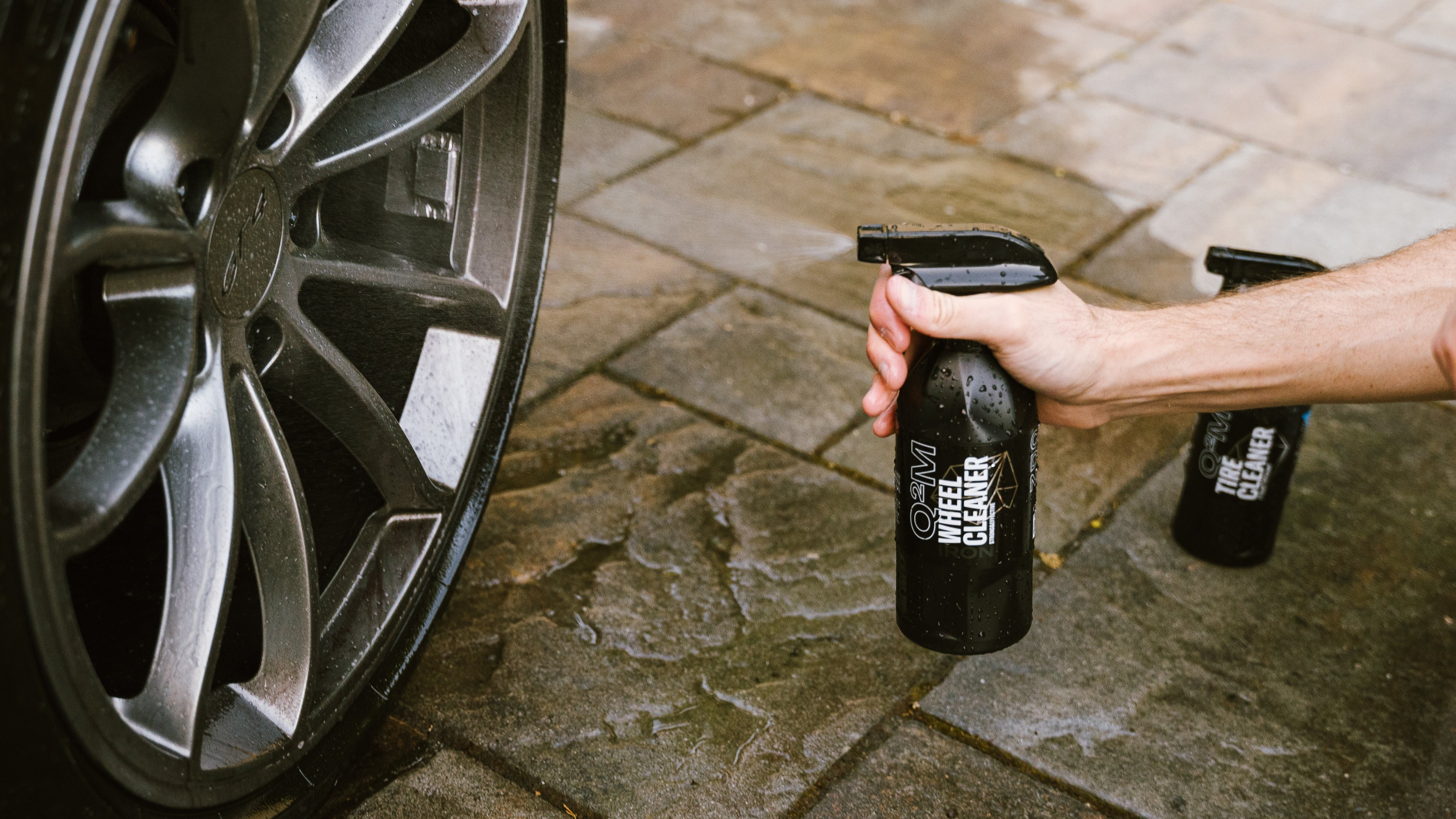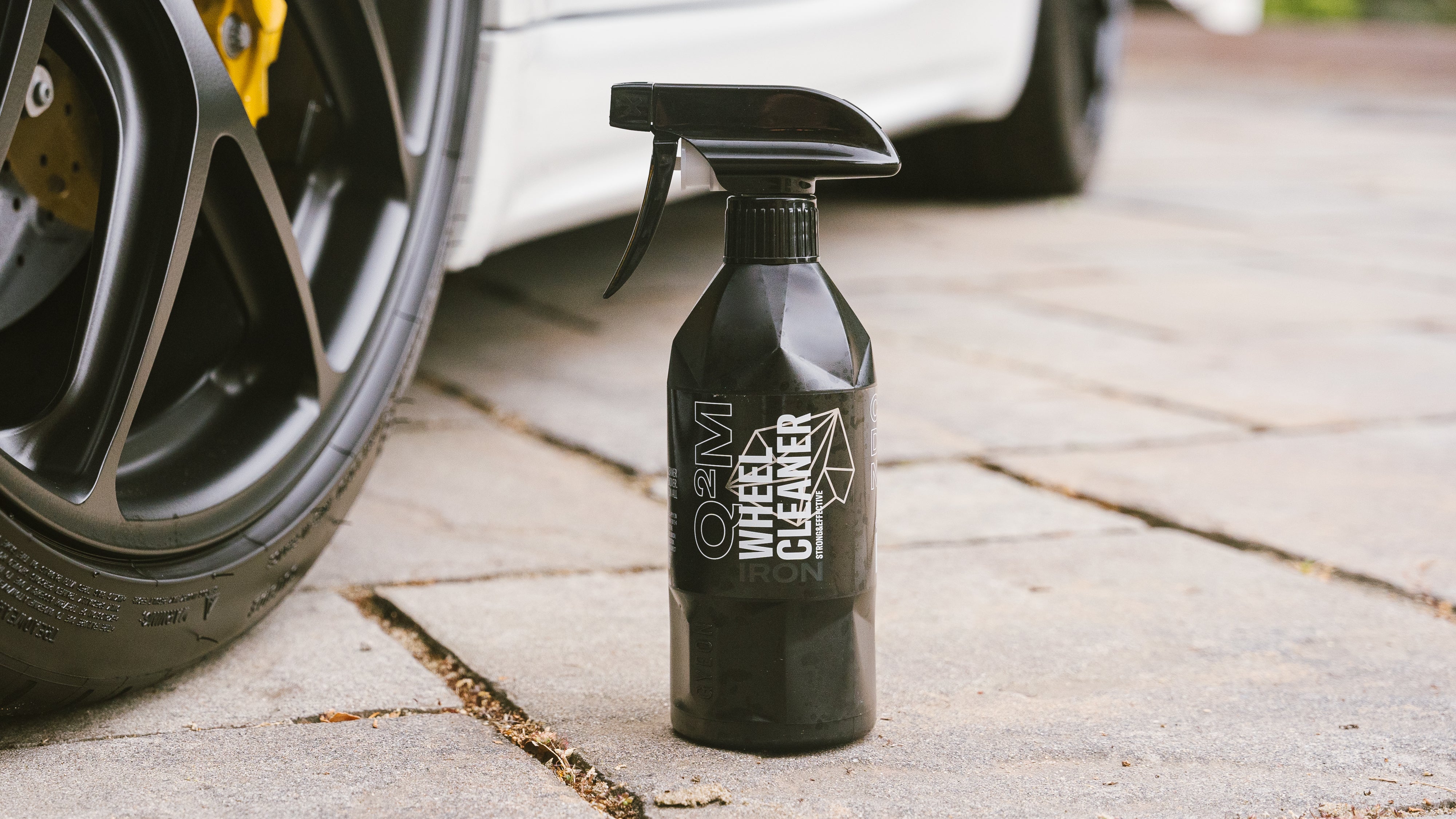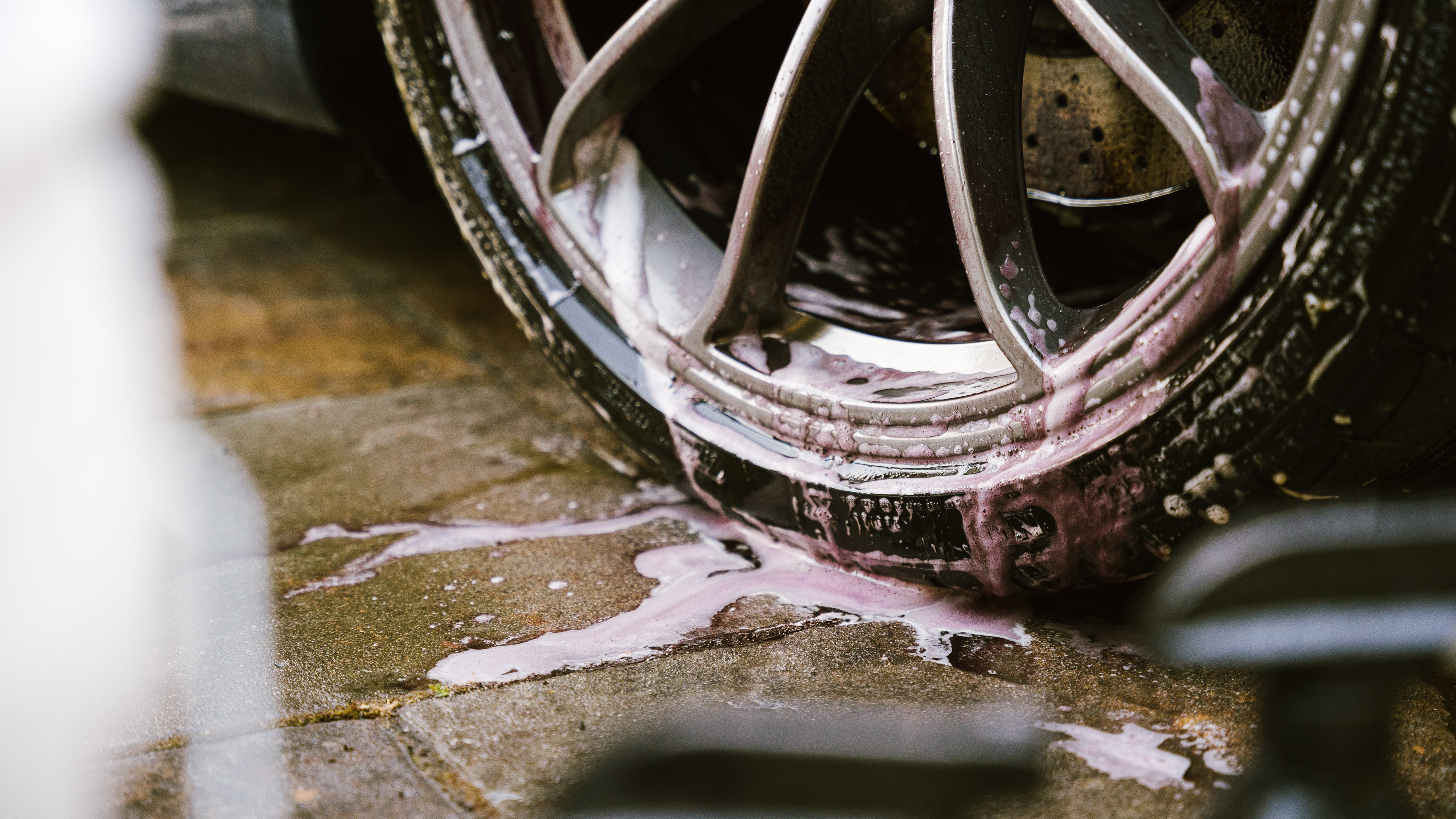Q²M Iron Wheel Cleaner – A Closer Look
Posted by JEFF MCEACHRAN

Following closely in the footsteps of our previous blog entry, this entry will be taking a closer look at Q²M Iron Wheel Cleaner and why it should be your choice over a standard Iron Remover.
Similarities & Differences
When looking at Q²M Iron and Q²M Iron Wheel Cleaner, at first glance it may be hard to distinguish the difference between the two products, but I assure you, while there are some similarities between the two, the differences do indeed go beyond just the bottle color.

As you may have guessed, both products are going to contain our iron remover chemical; this is important because your wheels and tires are the one part of the vehicle that are directly in contact with the ground for 99% of its life (1% for service and such). With this being the case, not only are they going to accumulate all the dirt, grime, and contaminants from normal day-to-day driving, but your wheels are quite legitimately inches away from your brakes as well. This all leads to quite the harsh environment and can make your wheels quite dirty rather quickly. This is where Iron Wheel Cleaner separates itself from standard Iron; while standard Iron is great for removing iron particles only, the wheels on your vehicle need a thicker, clingier formula that can help safely tackle the dirt and grime that wheels collect – Iron Wheel Cleaner does exactly this. By increasing the amount of detergent present in the product, Iron Wheel Cleaner becomes a more viscous formula that not only clings to the surface of the wheel better, but also adds an ample amount of slickness and cleaning power that pairs perfectly with your favorite wheel mitt or wheel brush.
When it comes to sensitive wheel finishes, a safe and slick wheel cleaner is imperative to safe wheel cleaning habits. Whether you have gloss black wheels or polished aluminum wheels, Iron Wheel Cleaner adds the necessary slickness to allow your wash medium to safely glide over the surface while removing dirt and grime. Iron Wheel Cleaner carries the same pH-neutral rating as well, so it can safely be used on anodized finishes as well.
Special Scenarios
A common question when it comes to wheel cleaners, is “what do I do if my car has carbon ceramic brakes”?

This is a great question and one that is very important to know the answer to. Firstly, if you are one of the lucky folks who own a vehicle equipped with these brake systems, my kudos to you, as it is likely quite the performance vehicle. Knowing how to clean wheels equipped with these types or brakes is essential, as using the wrong products or processes could result in damage to the brakes themselves.
Carbon ceramic brakes emit a significantly lower amount of ferrous contamination in comparison to traditional cast iron rotors and organic or metallic brake pads. It’s important to note that carbon ceramic brake discs are a porous material – this is important to know because any products used on or around the wheel have the potential to absorb into the brakes themselves, which can lead to reduced braking performance over time and possibly even a cracked rotor (which is typically quite expensive to repair/replace).
In the case of carbon ceramic brakes, I would recommend reaching for a gentler, detergent-based cleanser, such as Bathe or even PPF Wash (read about the differences between all our wash soaps here). Both options here are going to provide the slickness and cleaning power needed to clean your wheels without harming the brake systems.
Iron & Iron Wheel Cleaner – 2 Sides of the Same Coin
Both products are going to be tremendous iron removers, but they both have separate jobs to do. Traditional Iron is going to excel at paint decontamination over a larger area, while Iron Wheel Cleaner is going to focus its efforts on safe and effective wheel cleaning. With some wheel sets costing well over $10k and carbon ceramic brake options costing about the same, equipping yourself with as much knowledge as possible not only makes you a better detailer, but also helps you gain a deeper understanding of the chemistry of products and how they interact with your vehicle(s).

Hopefully this short blog entry helps bring a more in-depth explanation of our two iron offerings. If you have a topic you’d like to see us write about in the future or have product question you’d like to see us answer in a longer form style like this, let us know. As always, follow us on all our social media platforms (Instagram, Facebook, YouTube, TikTok) to stay most up to date with product releases, sales, and more! I look forward to seeing you all in the next blog entry – cheers!